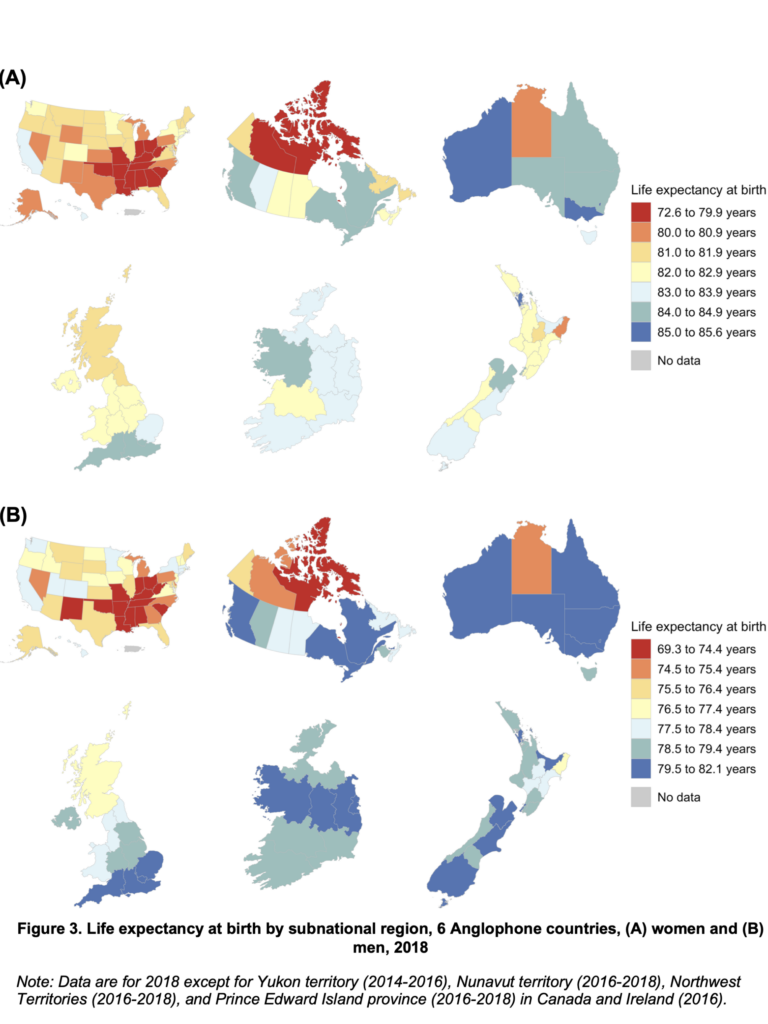U.S. has lowest life expectancy among rich, English-speaking countries, study says
In the U.S., the average life expectancy for men is 76.5 while the average for women is about 81.5 years. In Australia, on the other hand, women lived nearly four more years and men five more years than men and women America. The study also found that men and women in California and Hawaii lived longer than other Americans — though still not as long as Australians — while people in the Southeast’s life expectancy is well below the U.S. average (72.6 for women, 69.3 for men). LocalHealthGuide.

We Now Have a Chance to Stop the Most Deadly Infectious Disease — if We Act
…Humanity has had the tools to diagnose, treat and prevent TB for decades. Because of that, this airborne bacterial respiratory disease, once the cause of about 25 percent of all deaths in the United States, is no longer a widespread threat to public health in wealthy countries. But that’s far from true in lower-income countries. While international public health efforts have cut global TB case rates by a quarter and death rates by half since 2000, it is still the world’s No. 1 infectious-disease killer. TB claims more than one million lives annually. There are new advances in screening, prevention and treatment, however, that now make dramatic progress possible — if we tap them. NYT.
Sweden detects mpox variant for the first time outside of Africa
The discovery comes a day after the World Health Organization declared the viral illness an international health emergency.
… The ongoing African outbreak is driven by versions of the virus known as clade 1, including the offshoot clade 1b. Those versions have been associated with more severe illness and deaths than the clade 2 version responsible for the 2022 global outbreak. Guardian.
As mpox continues to cross borders, is the US prepared for an outbreak?
…The CDC issued a health alert and travel notice about the stronger mpox strain in Congo and neighboring countries, recommending providers and health agencies monitor for signs and ask patients about recent travel to affected areas. Since 2022, the U.S. has had outbreaks of clade II mpox, mostly among men who have sex with men, but also in some nonbinary and transgender people, according to recent CDC data. Overall, more than 32,000 people in the U.S. have been infected and 58 have died of mpox. USAToday.
Mpox Virus Detected In Pakistan, Health Authorities Say
Pakistan’s health ministry has confirmed at least one case of the mpox virus in a patient who had returned from a Gulf country, it said on Friday, as provincial health authorities reported they had detected at least three cases. A health ministry spokesperson said the sequencing of the confirmed case was underway, and that it would not be clear which variant of mpox the patient had until the process was complete. Reuters.
WHO Updates Pandemic Watchlist To Include Black Death And Bird Flu
The Black Death plague, bird flu and mpox are among 24 threats that have been added to an influential watchlist of the pathogens that could trigger the next pandemic. In the first update since Covid-19 swept the planet, a World Health Organization (WHO) panel has dramatically expanded the scope of its index of so-called priority pathogens. Already notorious diseases like Zika, yellow fever and avian influenza have been added, alongside lesser known threats such as Sin Nombre virus. Several bacteria, including cholera, the plague and salmonella, have also been incorporated for the first time. Telegraph.

Bird Flu Cases Now Detected in Domestic Cats in Colorado
Colorado’s outbreak of H5 bird flu is now showing up in another animal species: cats. Six feline cases of Influenza A (also known as HPAI, Highly Pathogenic Avian Flu H5N1) have been diagnosed in domestic cats in Colorado so far this year. That’s according to the Colorado Veterinary Medical Association’s website. At least five of the cases were located in Northern Colorado, in Larimer, Adams and Morgan counties, according to a U.S. Department of Agriculture website tracking the virus in mammals. CPR.
An Alternative to the Pap Smear Is Here, No Speculum Required
Starting this fall, women will be able to use a simple swab to screen for cervical cancer. The method offers an alternative to a procedure that many dread — and promises to address disparities in who develops the disease. NYT.
Can you get sick from the germs in toilet plumes?
When you flush a toilet, invisible plumes, which may contain viruses, can shoot almost five feet into the air and spread horizontally within a short time, a study showed.
… it is unlikely for mostpeople to become infected by pathogens in the plume unless someone with a highly contagious disease such as the stomach bug norovirus previously used the toilet … The risk from the organisms on your hands is much higher than from the organisms in the toilet plume, experts said. WashPost.
How people with asthma can cope with climate change
… There are several ways that climate change is directly linked to increased rates of asthma and other respiratory illnesses. Higher temperatures increase ground-level ozone, a powerful lung irritant. Warming climates also result in longer pollen seasons, and droughts and high temperatures are leading to more wildfires and the release of microscopic particulates, which worsen respiratory and cardiac conditions. (It’s also worth noting that burning fossil fuels causes air pollution, which is an asthma trigger.) WashPost.
Hospital warns about burns from viral social media candied-fruit recipe
Making the Chinese snack tanghulu requires working with molten sugar, which can cause severe burns if mishandled.
… melted sugar has a higher heat capacity than other liquids. “If spilled, it can create a severe scald burn, much like spilling hot soup, but it can cause a much deeper burn because of sugar’s properties,” she said. “Kids or teens can quickly grab the pot or bowl and the hot fluid splashes, spills or splatters over them.” WashPost.
To Lower Prescription Drug Costs, States Head To The Courthouse
Last month, the Federal Trade Commission released a scathing report suggesting that pharmacy benefit managers, the middlemen in the drug supply chain known as PBMs, are “profiting by inflating drug costs and squeezing Main Street pharmacies. ”The FTC found that because of consolidation in the industry, the three largest PBMs now manage nearly 80% of all prescriptions filled in the United States. PBMs use that power, the agency concluded, to raise drug prices, control patients’ access to them, and steer people away from independent pharmacies and toward the pharmacies they own. Stateline.


